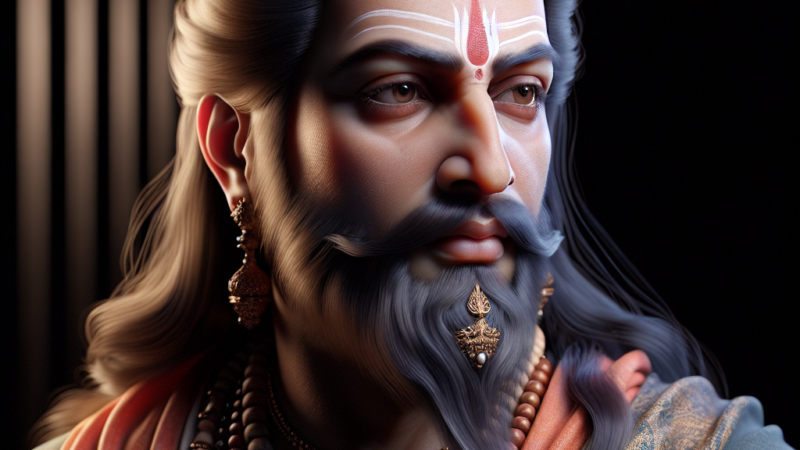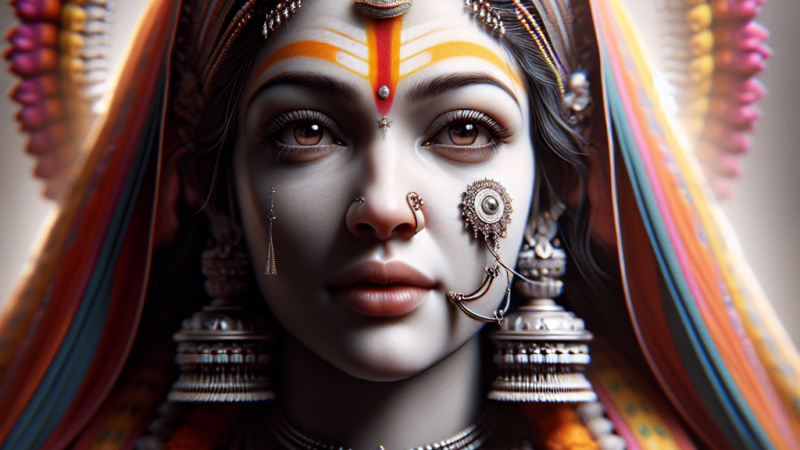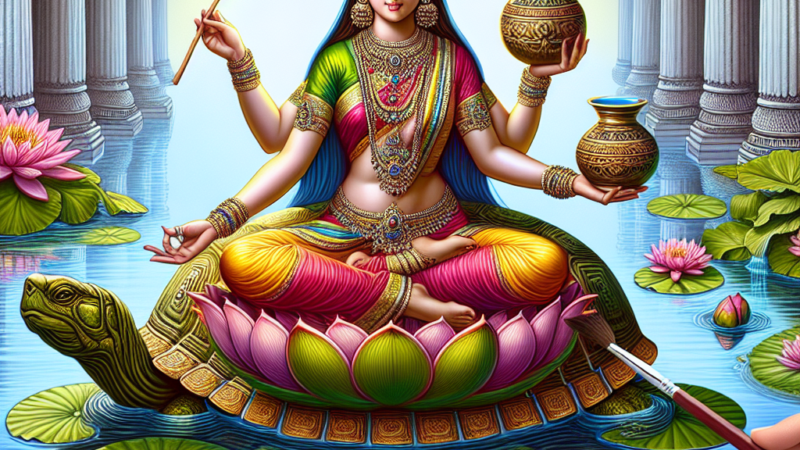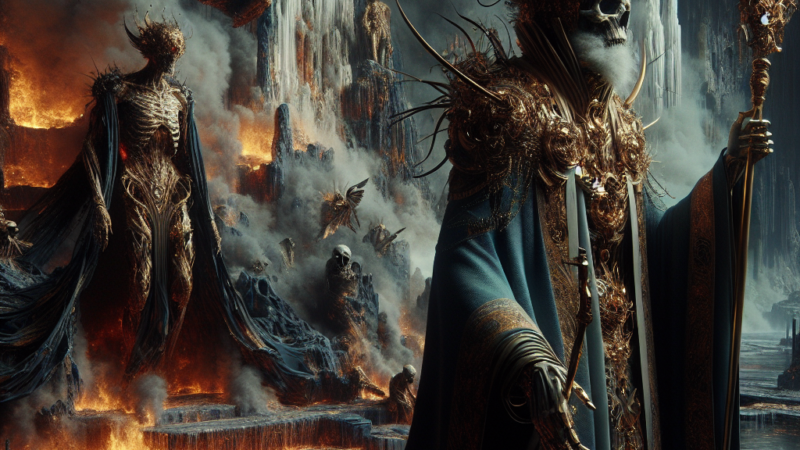Beeralingeswara: The Regional Deity of Karnataka
Introduction

Beeralingeswara, a revered regional deity of Karnataka, holds a significant place in the Hindu pantheon. Known for his protective and benevolent nature, Beeralingeswara is worshipped primarily in the southern parts of India, particularly in Karnataka. This deity is often associated with Lord Shiva, embodying many of his attributes and powers. The worship of Beeralingeswara is deeply rooted in the cultural and religious fabric of the region, reflecting the syncretic traditions that blend local beliefs with mainstream Hinduism.
The importance of Beeralingeswara in Hinduism is multifaceted. He is seen as a guardian deity, a protector of villages, and a granter of boons. His role extends beyond mere worship; he is an integral part of the community’s daily life, influencing various aspects of social and cultural practices. This article delves into the historical, cultural, and religious significance of Beeralingeswara, exploring his origins, myths, iconography, worship practices, and modern relevance.
Etymology and Meaning
Origin of the Name Beeralingeswara
The name Beeralingeswara is derived from two Sanskrit words: “Bheera,” meaning brave or courageous, and “Lingeswara,” which is a form of Lord Shiva, the supreme deity in Shaivism. Thus, Beeralingeswara can be interpreted as the “Brave Lord Shiva” or “Courageous Protector.”
Variations of the Name
Across different regions and texts, Beeralingeswara is known by various names, including Beerappa, Beereshwara, and Bheeralinga. These variations reflect the local dialects and linguistic influences, yet they all point to the same deity revered for his valor and protective nature.
Symbolic Meaning
The name Beeralingeswara symbolizes strength, protection, and divine authority. It signifies the deity’s role as a guardian and a powerful force against evil. The name also highlights the syncretic nature of regional deities in Hinduism, where local beliefs and practices are seamlessly integrated with the worship of major deities like Shiva.
Mythological Origins and Stories
Major Myths and Stories
Beeralingeswara is often associated with various myths and legends that highlight his protective and benevolent nature. One popular story tells of Beeralingeswara descending to Earth to protect a village from a malevolent spirit. Through his divine intervention, he vanquished the spirit and restored peace, earning the eternal gratitude and devotion of the villagers.
Role in Major Hindu Epics
While Beeralingeswara does not have a direct role in major Hindu epics like the Mahabharata or Ramayana, his attributes and stories often draw parallels with those of Lord Shiva. In many local adaptations and retellings, Beeralingeswara is depicted as an incarnation or aspect of Shiva, emphasizing his role as a protector and destroyer of evil.
Significant Tales and Folklore
In addition to the major myths, numerous local tales and folklore celebrate Beeralingeswara’s deeds. These stories often involve him aiding devotees in times of distress, granting boons, and ensuring the prosperity of the community. Such tales are passed down through generations, reinforcing the deity’s significance in regional culture.
Iconography and Symbols
Depiction in Art and Temples
Beeralingeswara is typically depicted in a form similar to Lord Shiva, with distinct regional variations. He is often shown with a trident (trishula), a drum (damaru), and adorned with serpents. In many temples, Beeralingeswara is represented by a lingam, a symbolic representation of Shiva.
Common Symbols
The trident, drum, and serpents are common symbols associated with Beeralingeswara. The trident represents his power to destroy evil, the drum signifies the cosmic sound of creation, and the serpents symbolize his control over fear and death. These symbols collectively highlight his divine authority and protective nature.
Meaning and Significance
Each symbol associated with Beeralingeswara carries deep spiritual significance. The trident is a powerful emblem of his ability to protect and destroy, the drum represents the rhythm of the universe, and the serpents denote his mastery over primal fears. Together, they encapsulate the deity’s role as a guardian and a divine force.
Worship and Rituals
Festivals Dedicated to Beeralingeswara
Several festivals are dedicated to Beeralingeswara, with the most prominent being the Beeralingeswara Jatre. This annual festival attracts thousands of devotees who gather to celebrate the deity with processions, music, dance, and various rituals. The festival is a vibrant display of devotion and community spirit.
Common Rituals and Practices
Worship of Beeralingeswara involves various rituals, including daily prayers, offerings of flowers and fruits, and the chanting of sacred mantras. Devotees often perform special pujas (worship ceremonies) to seek the deity’s blessings for protection, health, and prosperity. Animal sacrifices, though less common today, were historically part of the worship practices in some regions.
Sacred Texts and Mantras
While there are no specific sacred texts exclusively dedicated to Beeralingeswara, many hymns and mantras from Shaivite traditions are used in his worship. The “Om Namah Shivaya” mantra is particularly popular among devotees, reflecting the deity’s association with Lord Shiva.
Temples and Sacred Sites
Major Temples
Several temples dedicated to Beeralingeswara are spread across Karnataka and other parts of South India. The Beeralingeswara Temple in Bellary district is one of the most renowned, attracting devotees from far and wide. Other significant temples include those in Tumkur, Chitradurga, and Davanagere districts.
Significance of These Temples
These temples serve as important centers of worship and community gatherings. They are not only places of spiritual solace but also hubs of cultural activities, preserving and promoting regional traditions and practices. The architecture and rituals of these temples reflect the rich heritage of Karnataka.
Annual Pilgrimages and Events
Annual pilgrimages to Beeralingeswara temples are a significant aspect of the deity’s worship. Devotees undertake these journeys to seek blessings, fulfill vows, and participate in communal celebrations. The Beeralingeswara Jatre is one such event that sees massive participation, highlighting the enduring devotion to the deity.
Regional Variations and Cultural Impact
Regional Worship Practices
The worship of Beeralingeswara varies across different regions of Karnataka. In some areas, he is venerated as a village guardian deity, while in others, he is worshipped as a family deity. These variations reflect the diverse cultural landscape of the region and the adaptability of religious practices.
Influence in Regional Folklore and Festivals
Beeralingeswara’s influence extends beyond religious worship into regional folklore, festivals, and traditions. Stories of his deeds are recounted in folk songs, dances, and dramas, keeping the deity’s legacy alive in the cultural consciousness. Festivals dedicated to him are marked by vibrant celebrations, showcasing the rich cultural heritage of Karnataka.
Cultural Impact in Literature and Arts
Beeralingeswara has left an indelible mark on regional literature and arts. Numerous poems, songs, and literary works celebrate his virtues and deeds. In performing arts, traditional dance forms like Yakshagana often depict stories of Beeralingeswara, blending entertainment with spiritual themes.
Related Deities and Associations
Connections with Other Deities
Beeralingeswara is closely associated with Lord Shiva, sharing many of his attributes and symbols. He is also linked to other regional deities like Basava (Nandi), the bull who serves as Shiva’s vehicle. These connections highlight the syncretic nature of Hindu worship, where local and pan-Indian deities coexist and complement each other.
Family Relationships
In Hindu mythology, Beeralingeswara is often depicted as an aspect or incarnation of Shiva. As such, he is associated with Shiva’s family, including Parvati (his consort), Ganesha (his son), and Kartikeya (his other son). These familial ties reinforce his position within the broader Hindu pantheon.
Role in the Hindu Pantheon
Beeralingeswara’s role in the Hindu pantheon is that of a protector and guardian. He embodies the qualities of courage, strength, and benevolence, making him a revered figure among devotees. His worship reflects the integration of local beliefs with mainstream Hinduism, enriching the religious tapestry of the region.
Modern Relevance and Popularity
Contemporary Hindu Practice
In contemporary Hindu practice, Beeralingeswara continues to be a significant deity, especially in Karnataka. His temples are active centers of worship, and his festivals draw large crowds. The deity’s protective and benevolent nature resonates with modern devotees seeking solace and support in their daily lives.
Influence in Modern Media and Culture
Beeralingeswara’s influence extends to modern media, literature, and popular culture. He is featured in regional films, television shows, and literary works, reflecting his enduring appeal. These representations help keep the deity’s stories and significance alive in the public imagination.
Ongoing Traditions and Communities
Several communities in Karnataka continue to uphold traditions and practices dedicated to Beeralingeswara. These include annual festivals, temple rituals, and community gatherings. Such traditions ensure the continuity of the deity’s worship and the preservation of cultural heritage.
Conclusion
Beeralingeswara, the regional deity of Karnataka, embodies the rich cultural and religious heritage of the region. His significance as a protector and benevolent force is deeply ingrained in the community’s daily life and spiritual practices. From his mythological origins and symbolic meanings to his modern relevance, Beeralingeswara continues to be a revered figure in Hinduism.
The deity’s worship reflects the syncretic nature of Hinduism, where local beliefs and practices are seamlessly integrated with mainstream traditions. As a guardian deity, Beeralingeswara’s influence extends beyond religious worship into various aspects of cultural life, including literature, arts, and festivals. His enduring popularity and relevance in contemporary times highlight the timeless appeal of this regional deity.
Frequently Asked Questions (FAQs)
Who is Beeralingeswara?
Beeralingeswara is a regional deity of Karnataka, often associated with Lord Shiva. He is revered as a protector and benevolent force, embodying qualities of courage and strength.
What is the significance of Beeralingeswara in Hinduism?
Beeralingeswara holds a significant place in Hinduism as a guardian deity. His worship reflects the integration of local beliefs with mainstream Hindu traditions, emphasizing protection, benevolence, and divine authority.
Where are the major temples dedicated to Beeralingeswara?
Major temples dedicated to Beeralingeswara are located in Karnataka, including the renowned Beeralingeswara Temple in Bellary district. Other significant temples can be found in Tumkur, Chitradurga, and Davanagere districts.
What are the common symbols associated with Beeralingeswara?
Common symbols associated with Beeralingeswara include the trident (trishula), drum (damaru), and serpents. These symbols represent his power to protect, create, and control fear.
How is Beeralingeswara worshipped?
Beeralingeswara is worshipped through various rituals, including daily prayers, offerings of flowers and fruits, and chanting of sacred mantras. Festivals like the Beeralingeswara Jatre are also significant events in his worship.
References and Further Reading
Key Scriptures and Texts
- Shiva Purana – A major text in Shaivism that provides insights into the worship of Shiva and his various forms.
- Lingashtakam – A hymn dedicated to the worship of Shiva in the form of a lingam.
- Skanda Purana – Another important text that includes stories and hymns related to Shiva and his family.
Other Resources
- Temples of Karnataka by S. Settar – A comprehensive guide to the temples and religious heritage of Karnataka.
- Folklore of Karnataka by H. L. Nagegowda – A collection of regional folklore, including stories related to Beeralingeswara.
- Indian Mythology: Tales, Symbols, and Rituals from the Heart of the Subcontinent by Devdutt Pattanaik – A broader look at Indian mythology, including regional deities like Beeralingeswara.
We strive to present the teachings of Ramana Maharshi and the traditions of Sanatana Dharma with respect and accuracy. Terms like "mythology" are used for ease of understanding and are not meant to diminish the significance of sacred texts.





